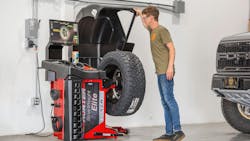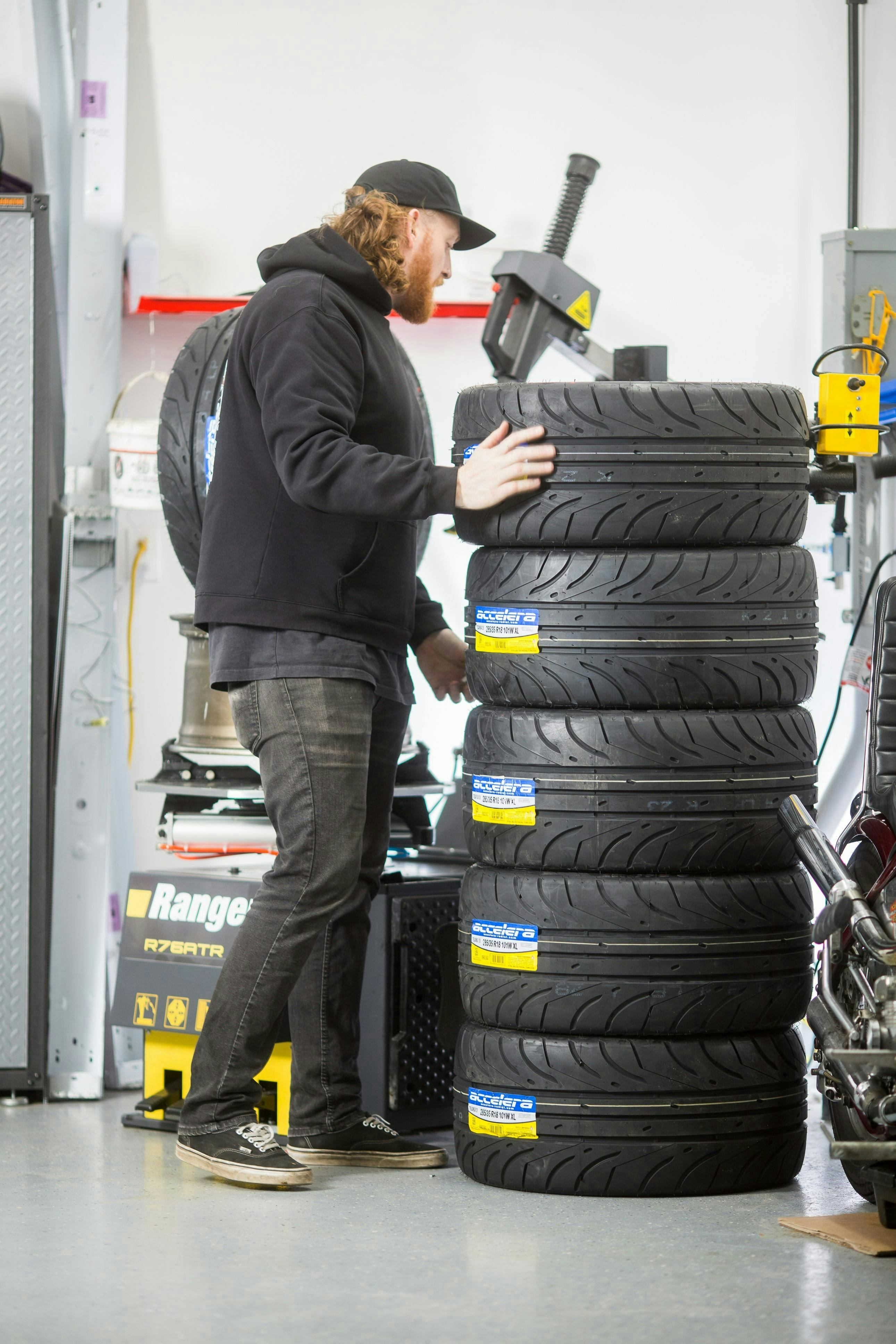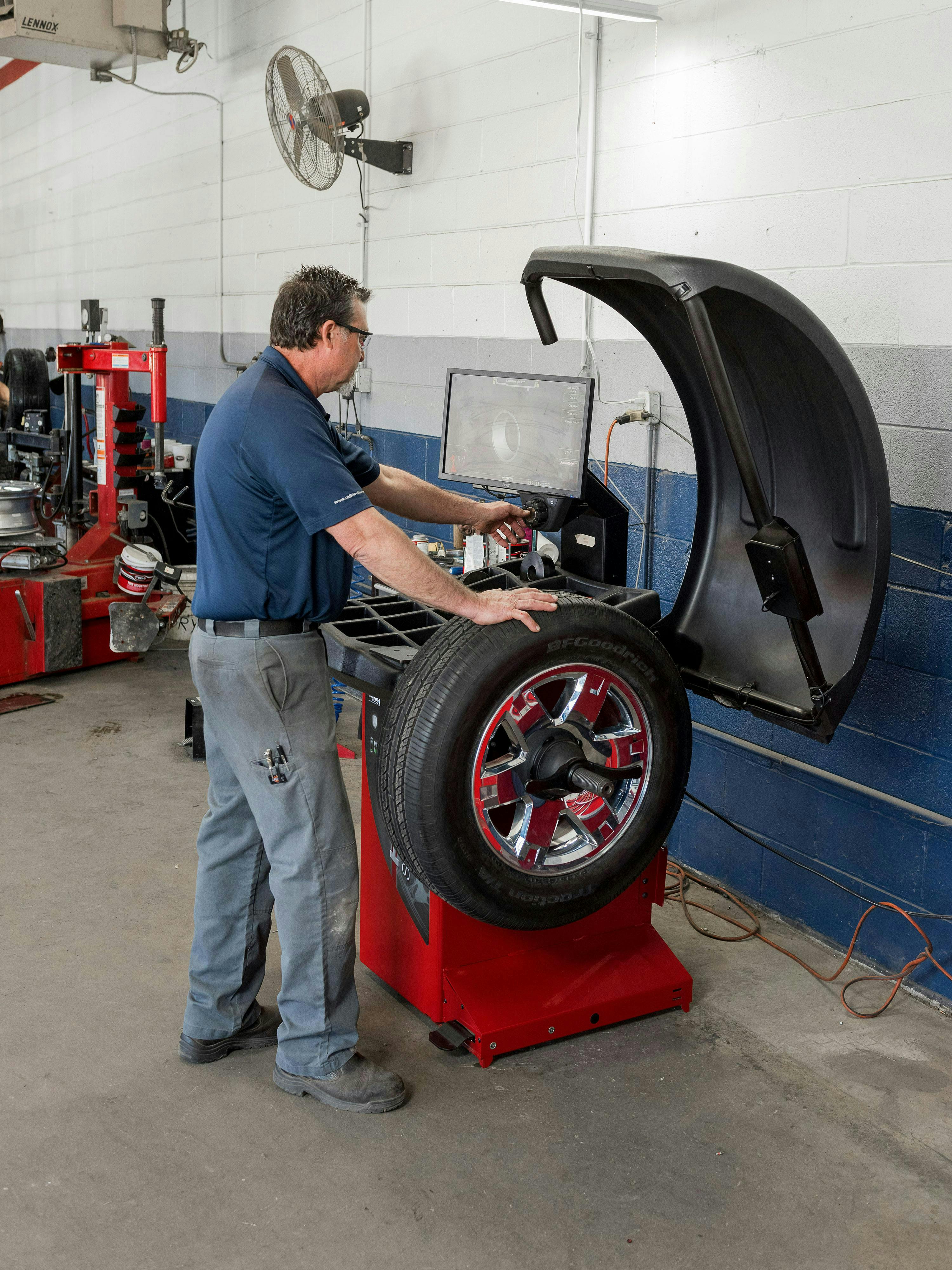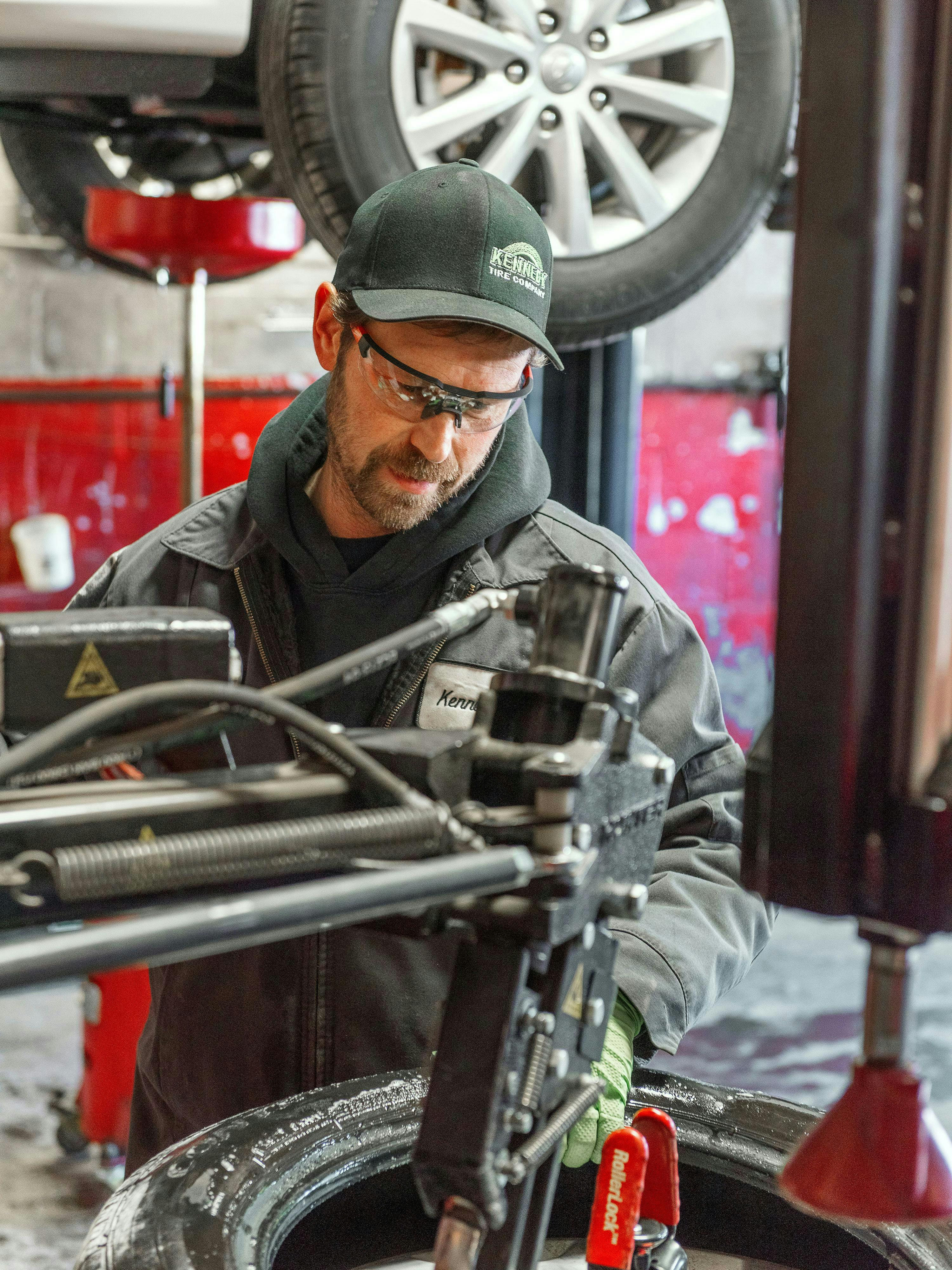Mounting and balancing tires may be the bread and butter of most tire dealerships, but that doesn’t mean it’s easy. Certain tire/wheel combinations present unique challenges. High-diameter, high performance (HP) and ultra high performance (UHP) tire and wheel packages are no exception.
Packed with on-the-road features and benefits like higher speed ratings, better responsiveness and improved stopping power, these tires present several caveats for technicians — caveats that when ignored or misunderstood can cost a dealership big in profits.
We turned to automotive service equipment industry experts Dave Wiederschall, national accounts manager at BendPak Inc.; Greg Meyer, engineering senior product manager for wheel balancers at Hunter Engineering Co.; and Jim Hudson, product manager for tire changers at Hunter Engineering, for tips, recommendations and best practices for mounting and balancing HP/UHP tire and wheel combinations.
MTD: Does the nature of expensive, high-diameter HP/UHP tire and custom wheel combinations create unique situations or considerations during the mounting and balancing process? Can you describe some situations and/or considerations inherent in mounting and balancing these types of tire and wheel packages? What are some key lookouts for technicians?
Wiederschall (BendPak): There are certainly considerations that must be examined when working with UHP and custom wheel/tire combinations. Things like carbon fiber wheels and low-profile, run-flat tires are becoming likelier to encounter when working with high- performance applications.
Technicians must evaluate wheel construction, sidewall construction and drop center location, to name a few, before determining best practices for mounting/demounting and balancing.
Hudson (Hunter): Large-diameter custom wheels often have reverse drop centers. This means clamping them on the tire changer upside down, so drop center verification is critical before you even get started. A leverless, center clamp tire changer is preferred for maximum wheel protection, combined with a flange plate. The tires themselves service in much the same way as any other low-profile fitment. Use plenty of bead lube and pay attention to mount directional tires properly.
Meyer (Hunter): By their nature, appearance is very important, so there are often no provisions for applying clip weights to the outside and sometimes the inside of the wheel edge.
This means tape weights are used, but even this space can be significantly restricted, which means tape weights can be placed very close to each other.
This limits the amount of couple force that is corrected with these weights and therefore makes balancers with intelligent algorithms very important.
This ensures that only the necessary weights are applied to get a superior balance, which prevents large weight applications and technicians being frustrated by “chasing weights.”
MTD: What are some best practices for achieving that perfect HP/UHP tire and custom wheel mounting and balancing job?
Wiederschall (BendPak): Ultimately, this comes down to using the right tool for the job, plus knowing how and when to implement the tools, when necessary. Many modern tire changers feature assist towers, bead rollers, bead press tools or any number of features designed to help technicians. Not to say they’re always necessary, but when working with specialty applications — these are a lifeline!
For example, using a traveling bead press tool when working with a low-profile or run-flat tire will make a world of difference. Not only is it much easier for the technician, but it certainly mitigates the risk of damaging the wheel or tire during mounting/ demounting operations.
When it comes to balancing, it’s all about the adaptors. Often times, using a standard cone mounting technique with UHP applications can result in poor balance and damage the hub bore of the wheel. A properly set up lug-centric adaptor can drastically improve results and virtually eliminate the risk of wheel damage when implemented in these situations. Again, it all comes down to recognizing these specialty situations and selecting tools based on the specific wheel/tire combination.
Hudson (Hunter): Bead massage after mounting the tire is a quick way to reduce road force by an average of seven pounds. It requires the center clamp machine, but only takes a few extra seconds to complete. Doing this on every assembly ensures the beads are seated properly over the entire circumference of the wheel. If a road force problem is found on the balancer, the tire machine makes the force matching correction an easy task.
Meyer (Hunter): Since these assemblies are often going onto premium vehicles with more particular customers, proper balance, as mentioned above, is important, but so is road force. An assembly can be perfectly balanced and still leave an unhappy customer due to excessive vibrations. To ensure every customer is happy, a perfect balance includes a road force measurement as well.
MTD: Do mounting and balancing techniques/procedures differ between P-metric HP/UHP tire and wheel combinations and LT-metric tire and wheel combinations for pickup trucks, etc.? If so, can you list some of the differences?
Wiederschall (BendPak): While the procedure stays largely the same with P-metric HP/UHP when compared to LT-metric tire and wheel combinations, the difference comes in the technique — particularly what assist tools or adaptors may be necessary to ensure a smooth process.
In my experience, the components that determine technique and tools would be the sidewall of the tire, tire load rating and ply count and the wheel’s construction. For instance, many LT-metric, even 10-ply or equivalent load range E (tires) can be easier to work with. The sidewall height will often determine what additional assist tools may be needed when working on LT-metric tires, whereas a short sidewall — HP/UHP tires with shorter or smaller aspect ratios — can be much more difficult to work with.
That said, the handling of LT-metric tires, which are generally larger in overall diameter, can present their own unique challenges. When it comes to balancing, it all comes down to mounting and as mentioned, generally, I find the best results in both LT-metric and HP/UHP tire/ wheel combinations when using a lug-centric adaptor.
Hudson (Hunter): For tire changing, the basics are the same. However, higher ply counts will be more challenging on a standard, levered machine. A leverless tire changer really levels the playing field in terms of the physical effort required.
Assist devices like wheel lifts, bead breaker rollers and press arms make it much easier on techs to do heavier LT fitments.
Meyer (Hunter): Generally speaking, the LT-metric assemblies do not have the weight placement restrictions that are common with the HP/UHP assemblies. Proper balance and road force measurement are still important on these assemblies. It’s just a bit easier to get there.
MTD: Is there a “golden rule” of mounting and/or balancing highdiameter HP/UHP tire and custom wheel combinations?
Wiederschall (BendPak): In my experience, the golden rule is simple: take your time. Realizing the importance of quick turnaround times in our industry — for both the client and business —taking a few moments to analyze the specifics of that wheel/tire combination can ultimately save time and prevent potentially costly errors.
Hudson (Hunter): Taking a little extra time goes a long way. Slowing down on expensive or difficult assemblies saves damage, saves tech effort and does a better job overall.
Meyer (Hunter): I don’t know if there’s a golden rule when it comes to balancing these assemblies. It just takes a bit more attention paid to the details to get a good result.



